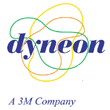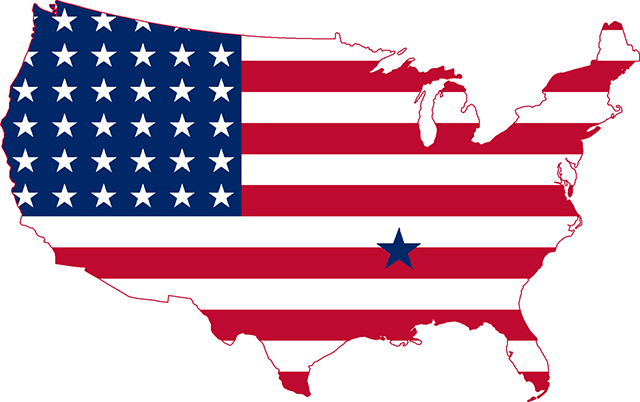

Product Use:
3.1 EMERGENCY OVERVIEW Specific Physical Form: Granules 3.2 POTENTIAL HEALTH EFFECTS Eye Contact: Vapors from heated material may cause eye irritation. Signs/symptoms may include redness, swelling, pain, tearing, and blurred or hazy vision. Skin Contact: Thermal Burns: Signs/symptoms may include intense pain, redness and swelling, and tissue destruction. Inhalation: Polymer Fume Fever: Sign/symptoms may include chest pain or tightness, shortness of breath, cough, malaise, muscle aches, increased heart rate, fever, chills, sweats, nausea and headache. If thermal decomposition occurs:,br> May be absorbed following inhalation and cause target organ effects. Ingestion: No health effects are expected.
4.1 FIRST AID PROCEDURES The following first aid recommendations are based on an assumption that appropriate personal and industrial hygiene practices are followed. Eye Contact: Immediately flush eyes with large amounts of water for at least 15 minutes. If signs/symptoms persist, get medical attention. If eye contact with hot material occurs: DO NOT ATTEMPT TO REMOVE MOLTEN MATERIAL. Immediately flush affected area with plenty of cold water and cover with a clean dressing. Have burn treated by a physician. Skin Contact: Wash affected area with soap and water. If signs/symptoms develop, get medical attention. If skin contact withhot material occurs: DO NOT ATTEMPT TO REMOVE MOLTEN MATERIAL. Immediately flush affected area with plenty of cold water and cover with a clean dressing. Have burn treated by a physician. Inhalation: Remove person to fresh air. If signs/symptoms develop, get medical attention. If Swallowed: No need for first aid is anticipated.
5.1 FLAMMABLE PROPERTIES 5.2 EXTINGUISHING MEDIA Non-combustible. Choose material suitable for surrounding fire. 5.3 PROTECTION OF FIRE FIGHTERS Special Fire Fighting Procedures: Exposure to extreme heat can give rise to thermal decomposition. Wear full protective equipment (Bunker Gear) and a self-contained breathing apparatus (SCBA). Unusual Fire and Explosion Hazards: Not applicable.
Accidental Release Measures: Observe precautions from other sections. Call 3M- HELPS line (1-800-364-3577) for more information on handling and managing the spill. Evacuate unprotected and untrained personnel from hazard area. The spill should be cleaned up by qualified personnel. Ventilate the area with fresh air. Collect as much of the spilled material as possible. Use wet sweeping compound or water to avoid dusting. Sweep up. Clean up residue. Place in a closed container approved for transportation by appropriate authorities. Dispose of collected material as soon as possible.
7.1 HANDLING 7.2 STORAGE
8.1 ENGINEERING CONTROLS 8.2 PERSONAL PROTECTIVE EQUIPMENT (PPE) 8.2.1 Eye/Face Protection 8.2.2 Skin Protection 8.2.3 Respiratory Protection 8.2.4 Prevention of Swallowing 8.3 EXPOSURE GUIDELINES
Stability: Stable. Materials and Conditions to Avoid: Alkali and alkaline earth metals; Reactions with metals in powder form occur from 370 degrees C onwards. Hazardous Polymerization: Hazardous polymerization will not occur.
ECOTOXICOLOGICAL INFORMATION Not determined. CHEMICAL FATE INFORMATION Not determined.
Waste Disposal Method: Reclaim if feasible. Dispose of waste product in a facility permitted to accept chemical waste. Combustion products will include HCl. Facility must be capable of handling halogenated materials. EPA Hazardous Waste Number (RCRA): Not regulated
ID Number(s):
US FEDERALREGULATIONS 311/312 Hazard Categories: STATE REGULATIONS CHEMICAL INVENTORIES,br> All applicable chemical ingredients in this material are listed on the European Inventory of Existing Chemical Substances (EINECS), or are exempt polymers whose monomers are listed on EINECS. The components of this material are in compliance with the new chemical notification requirements for the Korean Existing Chemicals Inventory. The components of this product are listed on the Australian Inventory of Chemical Substances. The components of this product are listed on Japan's Chemical Substance Control Law List (also known as the Existing and New Chemical Substances List.) All the components of this product are listed on China's Inventory of Chemical Substances. The components of this product are in compliance with notification requirements in the Philippines. The components of this product are listed on the Canadian Domestic Substances List. The components of this product are in compliance with the chemical notification requirements of TSCA. Contact 3M for more information. INTERNATIONAL REGULATIONS
NFPA Hazard Classification Health: 1 Flammability: 0 Reactivity: 0 Special Hazards: None National Fire Protection Association (NFPA) hazard ratings are designed for use by emergency response personnel to address the hazards that are presented by short-term, acute exposure to a material under conditions of fire, spill, or similar emergencies. Hazard ratings are primarily based on the inherent physical and toxic properties of the material but also include the toxic properties of combustion or decomposition products that are known to be generated in significant quantities. HMIS Hazard Classification Health: 1 Flammability: 0 Reactivity: 0 Protection: X - See PPE section. Hazardous Material Identification System (HMIS(r)) hazard ratings are designed to inform employees of chemical hazards in the workplace. These ratings are based on the inherent properties of the material under expected conditions of normal use and are not intended for use in emergency situations. HMIS(r) ratings are to be used with a fully implemented HMIS(r) program. HMIS(r) is a registered mark of the National Paint and Coatings Association (NPCA). Revision Changes: DISCLAIMER: The information in this Material Safety Data Sheet (MSDS) is believed to be correct as of the date issued. Dyneon MAKES NO WARRANTIES, EXPRESSED OR IMPLIED, INCLUDING, BUT NOT LIMITED TO, ANY IMPLIED WARRANTY OF MERCHANTABILITY OR FITNESS FOR A PARTICULAR PURPOSE OR COURSE OF PERFORMANCE OR USAGE OF TRADE. User is responsible for determining whether the Dyneon product is fit for a particular purpose and suitable for user's method of use or application. Given the variety of factors that can affect the use and application of a Dyneon product, some of which are uniquely within the user's knowledge and control, it is essential that the user evaluate the Dyneon product to determine whether it is fit for a particular purpose and suitable for user's method of use or application Dyneon provides information in electronic form as a service to its customers. Due to the remote possibility that electronic transfer may have resulted in errors, omissions or alterations in this information, Dyneon makes no representations as to its completeness or accuracy. In addition, information obtained from a database may not be as current as the information in the MSDS available directly from Dyneon. 3M MSDSs are available at www.3M.com |
||||||||||||||||||||||||||||||||||||||||||||||||||||||||||||||||||||||||||||||||||||||||||||
 Made in the USA of US and imported parts.
Made in the USA of US and imported parts.Buy Our Traps, Create US Jobs!